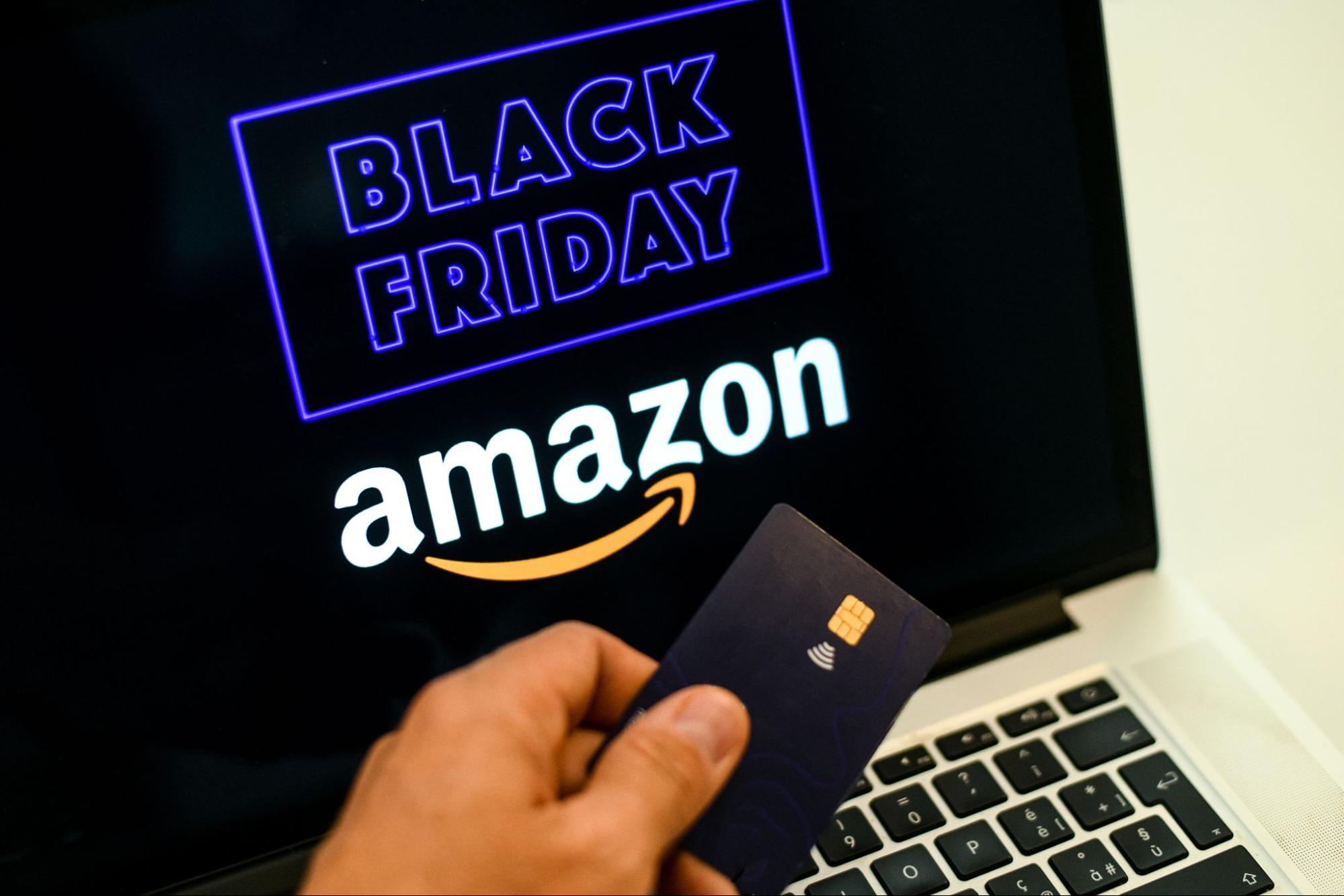If you’ve ever dreamed of running your own Amazon business without needing to develop or manufacture your own products, retail arbitrage offers an accessible and low-risk way to get started. One of the most popular—and accessible—selling methods on Amazon is retail arbitrage, which allows sellers to buy discounted products from retail stores and resell them on Amazon for a profit.
With millions of customers browsing Amazon daily, the opportunity to turn everyday retail products into profitable items is more attractive than ever. This blog will guide you through everything you need to know about retail arbitrage on Amazon, including how to find profitable products and tips for maximizing your returns.
What Is Retail Arbitrage?
Retail arbitrage is the process of purchasing products from retailers at a lower price and then reselling them on a marketplace like Amazon at a higher price. The key to success in this business model is finding products that are significantly discounted or on sale, which allows you to sell them for a profit while covering fees and other expenses.
Unlike private labeling or wholesaling, retail arbitrage requires less upfront investment and provides a quicker path to selling products. This makes it a great option for beginners looking to start their e-commerce business without developing their own products or spending large amounts on bulk inventory.
Is Retail Arbitrage Allowed on Amazon?
Yes, retail arbitrage is allowed on Amazon, with many sellers using it as a strategy to generate income. Amazon’s policies permit the resale of products bought from retail stores or other online marketplaces, assuming the products are authentic and not counterfeit. Sellers must follow Amazon’s rules and guidelines, ensuring they do not sell prohibited items and comply with all applicable laws and Amazon’s policies regarding product conditions and authenticity.
How Does Amazon Retail Arbitrage Work?
Let’s break down the process into simple steps to understand how retail arbitrage on Amazon works.
Step 1: Sourcing Products
Retail arbitrage sellers begin by hunting for products in retail stores (like Walmart, Target, or local dollar stores). The key is to find items being sold at a significant discount. Some common places to find products include:
- Clearance sections in big-box retailers.
- Discount stores (like TJ Maxx or Dollar Tree).
- Seasonal or holiday sales, where retailers need to clear old inventory.
Pro Tip: Regularly check different locations and track when stores tend to have sales. The more often you visit stores, the better deals you can find.
Step 2: Scanning and Analyzing Products
Once you find discounted products, use the Amazon Seller App to scan the product’s barcode. This app will show you important information about the item, including:
- Current selling price on Amazon.
- Sales rank, indicating how popular the item is in its category.
- Estimated FBA (Fulfillment by Amazon) fees so that you can determine potential profits.
At this stage, you need to quickly decide whether the product is worth reselling based on potential profit margins and the sales rank.
Step 3: Purchasing Inventory
After identifying profitable items, purchase them at a discounted price. To start, you don’t need to invest in large quantities. Many successful arbitrage sellers recommend starting with small batches of items to minimize risk and test product viability.
Step 4: Listing the Products on Amazon
After sourcing your products, you need to list them on Amazon’s marketplace. You can create a new listing if it doesn’t already exist, or you can list your product under an existing product page (which is typical for branded items). Make sure your listings include:
- Accurate product descriptions
- Relevant keywords to make your product searchable
- Competitive pricing that is relevant to your target profit margins
Pro Tip: If you’re selling new items, ensure the product’s condition is clearly marked as new and include quality images to boost sales.
Step 5: Fulfilling Orders with Amazon FBA
Once your products are listed, you can use Amazon’s Fulfillment by Amazon (FBA) service to manage storage, packing, shipping, and customer service. Here’s how FBA works:
- You ship your products in bulk to one of Amazon’s fulfillment centers.
- Amazon stores your products in their warehouse.
- When a customer places an order, Amazon picks, packs, and ships the item to the buyer.
Pro Tip: FBA simplifies the logistics of selling on Amazon, allowing you to focus on sourcing and listing products while Amazon handles the heavy lifting. Your FBA-listed products also become eligible for Amazon Prime, which can significantly boost your sales since many buyers prefer Prime shipping.
Step 6: Managing Inventory and Replenishing Stock
As your products begin to sell, it’s essential to monitor your inventory levels. The Amazon Seller dashboard provides detailed information about your stock, sales velocity, and what items need to be restocked. Successful arbitrage sellers track their inventory closely to avoid running out of stock and losing sales momentum.
Pro Tip: Always balance sourcing new products and managing your existing inventory to ensure consistent cash flow and sales growth.
Pros of Retail Arbitrage on Amazon
There are several reasons why retail arbitrage is a popular choice for Amazon sellers:
1. Easy to Get Started
Getting started with retail arbitrage requires minimal investment compared to other business models like private labeling or dropshipping. You don’t need to design your products or buy in bulk, making it accessible for newcomers.
2. Low Start-up Costs
Unlike private labeling, which requires significant upfront investment, retail arbitrage allows you to start small. You can begin by sourcing products locally and scaling up as you gain experience and profits.
3. Access to Amazon's Customer Base
Amazon boasts millions of customers worldwide, and its marketplace is the go-to shopping destination for many consumers. By listing your products on Amazon, you automatically gain access to this vast audience, giving your products a high visibility and sales potential.
4. Leverage FBA for Scalability
By using Amazon’s FBA service, you can focus more on sourcing products and less on shipping and customer service logistics. FBA allows you to store your products in Amazon’s warehouses, and when a sale is made, Amazon takes care of the rest. This makes it easier to scale your business without getting bogged down by shipping.
Cons of Retail Arbitrage on Amazon
While retail arbitrage can be profitable, it comes with its challenges:
1. Fluctuating Prices
Prices on Amazon can fluctuate due to increased competition or changes in market demand. Products that were profitable when you purchased them may decrease in price, reducing your margins. Keep an eye on price trends and be ready to adjust your strategy.
2. Counterfeit Products
Selling counterfeit or inauthentic products can lead to your account being suspended. Always source from legitimate retailers and avoid products that seem too good to be true. Check the authenticity of branded products and avoid items that could raise red flags with Amazon’s compliance team.
3. Managing Cash Flow
Since retail arbitrage involves constantly buying and selling inventory, managing cash flow can take time and effort. Don’t tie up too much of your money in slow-moving products, and always leave room for restocking fast-sellers.
4. Time-Consuming
Retail arbitrage can be time-consuming. It involves spending a lot of time searching for discounted items that can be resold at a profit. This includes researching potential deals, comparing prices, and staying updated on market trends.
How to Find Products for Retail Arbitrage to Resell on Amazon
The key to retail arbitrage success lies in consistently finding products that can be sold for a profit on Amazon. Here are some of the best places to hunt for these opportunities:
1. Local Retail Stores
Retail giants, also known as big-box retailers like Walmart, Target, Home Depot, and Best Buy, often have clearance sections or seasonal sales where you can find heavily discounted items. Walking through these stores and scanning products using the Amazon Seller App will help you identify potential arbitrage opportunities.
2. Discount Stores and Clearance Sections
Discount chains like TJ Maxx, Ross, Marshalls, and outlet malls are treasure troves for arbitrage sellers. These stores often carry overstock from big brands at a fraction of the original price. Look for brand-name products, particularly in categories like clothing, home goods, and electronics. Always check the clearance aisles in stores too. Products that are being discontinued or are out of season are often marked down significantly, offering great profit margins for resellers.
3. Dollar Stores
Dollar stores (such as Dollar Tree and Dollar General) can be gold mines for retail arbitrage sellers. These stores offer a wide variety of products, from home goods to seasonal items, all at rock-bottom prices. Many items in dollar stores are priced significantly below their market value, making it easy to flip them for a profit on Amazon. However, be mindful of quality and competition when sourcing from dollar stores. Ensure that the items you’re purchasing are in good condition and have a healthy profit margin after factoring in Amazon fees.
4. Seasonal Sales and Holiday Deals
Keep an eye on major sales events like Black Friday, Cyber Monday, and after-holiday clearance sales. Retailers slash prices during these periods, which is the perfect time to stock up on products that will sell at full price after the rush.
Best Products for Retail Arbitrage
Not all products are equal when it comes to retail arbitrage. Some categories consistently perform better due to high demand, relatively low competition, and better profit margins. Here are some of the best product types to consider:
1. Toys and Games
Toys, especially around the holiday season, are great for retail arbitrage sellers. Limited-edition toys, collectible items, or popular toys that are out of stock in many locations tend to sell for a premium on Amazon.
2. Electronics and Accessories
Electronics and their accessories, such as headphones, phone cases, chargers, and smart home devices, have strong demand and can provide substantial profits. However, be mindful of brand restrictions or counterfeit risks.
3. Health and Beauty Products
Consumers regularly buy health and beauty products, including skincare, haircare, vitamins, and personal care items. These products tend to have low manufacturing costs, leading to healthy margins. Make sure to check for category restrictions, as some brands require approval to sell on Amazon.
4. Clothing and Apparel
Clothing is a fast-moving category on Amazon, and retail arbitrage sellers can find profitable items in clearance sections at department stores, outlet malls, and discount retailers like TJ Maxx or Ross. Focus on popular brands, seasonal clothing, and trendy items. The key to success with clothing is finding items that are brand-name or in demand. Stick to items that have a good reputation for quality, as customers on Amazon tend to avoid low-quality or unknown brands.
5. Home and Kitchen Goods
Items such as kitchen gadgets, organizers, or cleaning supplies are always in demand. These products are practical, sell consistently throughout the year, and tend to have a longer shelf life, making them reliable for retail arbitrage.
How to Analyze Products for Retail Arbitrage
Finding products is only the first step—next, you need to analyze whether they’re worth reselling. The goal is to ensure that you can sell the item at a higher price on Amazon while still making a profit after all fees are taken into account.
1. Using the Amazon Seller App
The Amazon Seller App is an essential tool for anyone doing retail arbitrage. By scanning product barcodes in-store, the app will show you the current listing price on Amazon, the sales rank (an indicator of how well the product sells), and estimated fees, helping you quickly determine profitability.
2. Understanding Sales Rank
Understanding Amazon’s sales rank is crucial for retail arbitrage success. The sales rank, also known as the Best Sellers Rank (BSR), indicates how well a product sells within its category. A lower number means the product sells more frequently than others in the same category, making it a potentially profitable item to resell. For retail arbitrageurs, analyzing sales rank helps identify fast-moving products, allowing them to make informed decisions on what to stock.
3. Calculating Profit Margins and FBA Fees
To make retail arbitrage profitable, you need to calculate all expenses, including:
- Cost of goods (COGS): The price you pay for the product.
- Amazon fees: These include referral fees, storage fees, and FBA fees (if using FBA).
- Shipping costs: If you are sending items to an Amazon fulfillment center, you need to calculate shipping fees. Use the profitability calculator in the Amazon Seller App to estimate your profit. Aim for a minimum 30% margin to ensure your efforts are worthwhile.
4. Using Product Research Tools
Other than the Amazon Sellers App, several product research tools can help you identify profitable items before you even step foot in a store. These tools provide data-driven insights into product trends, price history, and market competition. Some of the best tools include:
- Keepa: Keepa tracks the price history of Amazon products, showing how much they’ve sold over time. It helps you identify pricing trends and decide when it’s a good time to buy and resell a product.
- Helium 10: One of the most comprehensive Amazon seller tools available. It includes product research features like Black Box, which helps you find profitable items in specific niches. Helium 10 also has features to track competitors, analyze listings, and assess profitability.
- Jungle Scout: Popular among Amazon sellers, Jungle Scout is a powerful product research tool that provides data on sales estimates, demand, and competition. It helps you assess whether a product has strong sales potential before purchasing for arbitrage.
Using these tools can save you time and money by helping you quickly identify whether a product is worth buying to resell.
5. Check for Restricted and Gated Categories
Amazon has restricted or “gated” certain categories, like health and beauty, supplements, and some branded items. Make sure to check whether the product you want to sell falls into a restricted category. You may need special approval or documentation to list these products, so avoid investing in them until you’re certain you can sell them.
Retail Arbitrage vs. Online Arbitrage
Retail arbitrage isn’t the only way to source products for resale. Online arbitrage is another method that involves purchasing discounted products from online retailers and reselling them on Amazon. Let’s break down the differences:
Retail Arbitrage
- Sourcing: Products are sourced from physical retail stores.
- Time Commitment: It requires visiting multiple stores, scanning items, and manually purchasing products. This can be time-consuming, especially if the stores are far apart.
- Advantages: It allows you to physically inspect products before purchase, and you may find exclusive in-store deals that are unavailable online.
- Challenges: It is limited by local inventory and requires a lot of time spent traveling to different stores.
Online Arbitrage
- Sourcing: Products are purchased from online retailers (such as Walmart, Target, eBay, or even other marketplaces like Ghost) and resold on Amazon.
- Time Commitment: Less time-consuming than retail arbitrage since you can source products from the comfort of your home. It’s also easier to track price fluctuations using automated tools.
- Advantages: Broader access to products across different markets, quick price comparisons, and no need to leave home. Ideal for those wanting to scale.
- Challenges: You can’t physically inspect products before purchase, which can lead to issues with product quality. Popular deals may sell out faster online.
Ultimately, many successful sellers use a combination of both retail and online arbitrage to maximize their sourcing options. Retail arbitrage is great for unique, in-store deals at a low cost, while online arbitrage provides broader access to products and scalability.
How to List Your Arbitrage Products on Amazon
Once you’ve sourced your products, it’s time to list them on Amazon. Follow these steps to optimize your listings and ensure a smooth selling process:
1. Create Optimized Listings
Ensure your product listings are optimized with relevant keywords that customers are searching for. The product title, bullet points, and description should be clear, concise, and keyword-rich. Use Amazon’s search suggestions to find popular keywords in your niche.
2. Use High-Quality Images
Images are one of the most important factors in convincing customers to buy. If you’re using an existing listing, ensure it has high-resolution images. If you’re creating a new listing, take your own professional-quality photos that highlight the product from multiple angles.
3. Set Competitive Prices
Pricing is critical to your success. Monitor your competitors’ prices and adjust your own to stay competitive. Consider using repricing tools to automatically adjust your prices based on market conditions, ensuring you stay competitive without sacrificing profits.
Best Practices for Retail Arbitrage on Amazon
To run a successful retail arbitrage business on Amazon, it’s essential to adopt certain best practices to maximize profitability, avoid common mistakes, and scale efficiently. Here are some common retail arbitrage tips to follow:
1. Stay Updated on Amazon's Policies
Amazon frequently updates its selling policies and restrictions. Ensure you are familiar with the latest rules regarding restricted brands, gated categories, and counterfeit products. Selling restricted or inauthentic items can lead to account suspension.
2. Track Your Expenses
Proper expense tracking is important to understanding your profitability. Record all costs, including the price of goods, shipping, storage fees, and any Amazon fees. Software like InventoryLab can help you monitor your overall business health.
3. Focus on High-Turnover Products
Prioritize sourcing products with a high sales rank to ensure faster turnover. Holding onto inventory for too long can increase your storage fees and tie up capital. Products with lower sales ranks move faster, improving cash flow.
4. Use Repricing Tools
The Amazon marketplace is competitive, and prices can change frequently. To stay competitive, use automated repricing tools to adjust your prices in real-time and remain competitive without sacrificing profits.
5. Diversify Your Product Categories
Don’t limit yourself to just one category or niche. Diversify your inventory across different product categories to reduce the risk of being affected by seasonality or market trends. Selling in multiple categories spreads out your risk.
6. Optimize Your Listings
Always optimize your product listings with relevant keywords, detailed descriptions, and clear, high-quality images. Well-optimized listings improve visibility on Amazon and can lead to higher conversions and sales.
7. Start Small, Then Scale
If you’re just starting out, begin with a small investment in a few products to minimize risk. As you gain experience and confidence in sourcing and selling, scale your operations by increasing your inventory and expanding your sourcing efforts.
8. Build Relationships with Store Employees
Building relationships with local store managers or employees can give you an edge. They might give you early access to clearance items, offer insights on restocking times, or even notify you of upcoming sales or discounts.
Get Started with Retail Arbitrage on Amazon
Retail arbitrage on Amazon is an accessible and scalable business model that allows sellers to capitalize on discounted products from local stores or online marketplaces. By consistently sourcing the right products, using the right tools to analyze profitability, and optimizing your listings for Amazon’s platform, you can build a successful and sustainable business.
Make sure to subscribe to the Resale Pro newsletter if you want to learn more about reselling on Amazon. We offer valuable tips to help you thrive in the reselling world. Don’t miss out on the latest strategies and tools that can take your e-commerce business to the next level!



